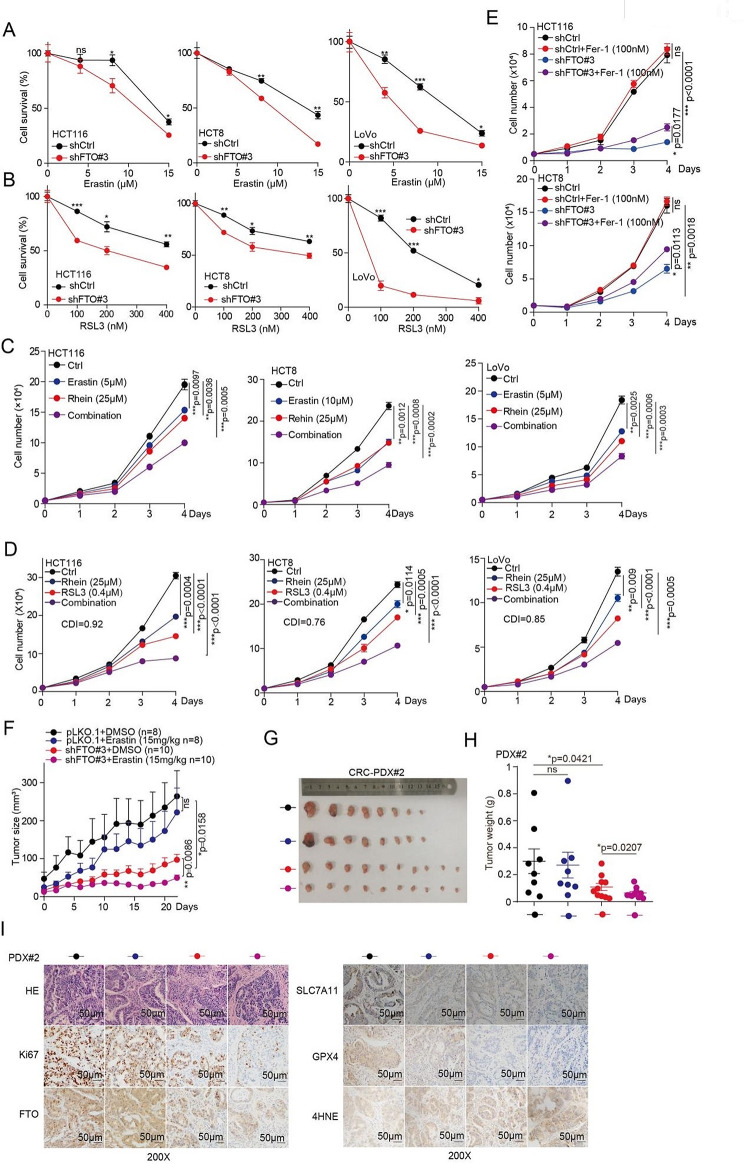Fig. 3.
Targeting FTO enhances the anti-tumor effects of Erastin and RSL3. (A-B) Cell survival was determined in CRC cells with stable FTO knockdown when treated with 0 µM, 5 µM, 10 µM and 15 µM of Erastin (or 0 nM, 100 nM, 200 nM, 300 nM, and 400 nM of RSL3), and then harvested cells for counting cell number at indicated day 3. (C-D) CRC cells treated with 25 µM Rehin, 5 µM of Erastin (or 400 nM of RSL3), alone or in combination, and then and then harvested cells for counting cell number at indicated day 1, day 2, day 3, and day 4 to determine the cell proliferation. (E) Cell proliferation was determined in CRC cells with stable FTO knockdown when treated with or without 100 nM of Fer-1, and then harvested cells for counting cell number at indicated day 3. (F) Tumor growth was compared between xenograft nude mice bearing with CRC PDX injected with FTO shRNA virus and control shRNA virus IP injection with or without Erastin (15 mg/kg per two days). Tumor volume was calculated for each group at the indicated times. (G) All tumors from nude mouse are shown. (H) Tumor mass in xenograft nude mice bearing with CRC PDX injected with FTO shRNA virus and control shRNA virus IP injection with or without Erastin (15 mg/kg per two days). (I) HE, Ki67, FTO, SLC7A11, GPX4, and 4HNE were analyzed in a representative PDX xenograft tumor by IHC (scale bar = 50 μm). (All error bars, mean values ± SEM, p values were determined by unpaired two-tailed Student’s t test of n = 3 independent biological experiments. *p < 0.05; **p < 0.01; ***p < 0.001)

